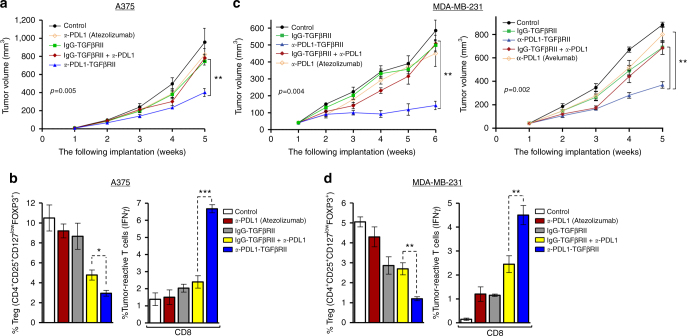Fig. 7.
a-PDL1-TGFβRII exhibits superior antitumor efficacy compared to a-PD-L1 antibodies. Effect of the indicated treatments on melanoma and TNBC tumor xenografts in NSG mice reconstituted with human CD34+ HSC. Mice engrafted with human CD3+ cells were inoculated subcutaneously with either human melanoma (A375) or TNBC (MDA-MB-231-Luc) tumor cells. At 10d following tumor inoculation, mice were randomized into groups and treated i.p. with the indicated antibodies (5 mg kg−1 weekly) or vehicle alone (untreated control). Tumor growth curves in A375 tumor-bearing mice (a) or MDA-MB-231-Luc tumor-bearing mice (c) are shown (mean ± SEM of five to six mice in each indicated group). In TNBC model, independent experiments were conducted to compare two different a-PDL1-TGFβRII antibody–ligand traps with their respective a-PD-L1 antibodies, Atezolizumab (c, left) (and Avelumab (c, right). b, d Flow cytometric analysis of the comparative in vivo effect of the indicated treatments on infiltrating FOXP3-expressing Tregs and tumor-reactive IFN-γ-expressing CD8+ T cells in melanoma (b) and TNBC (d) models

